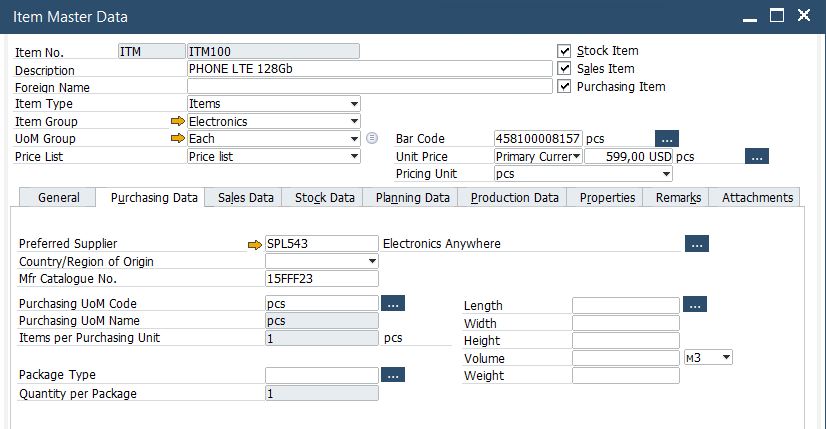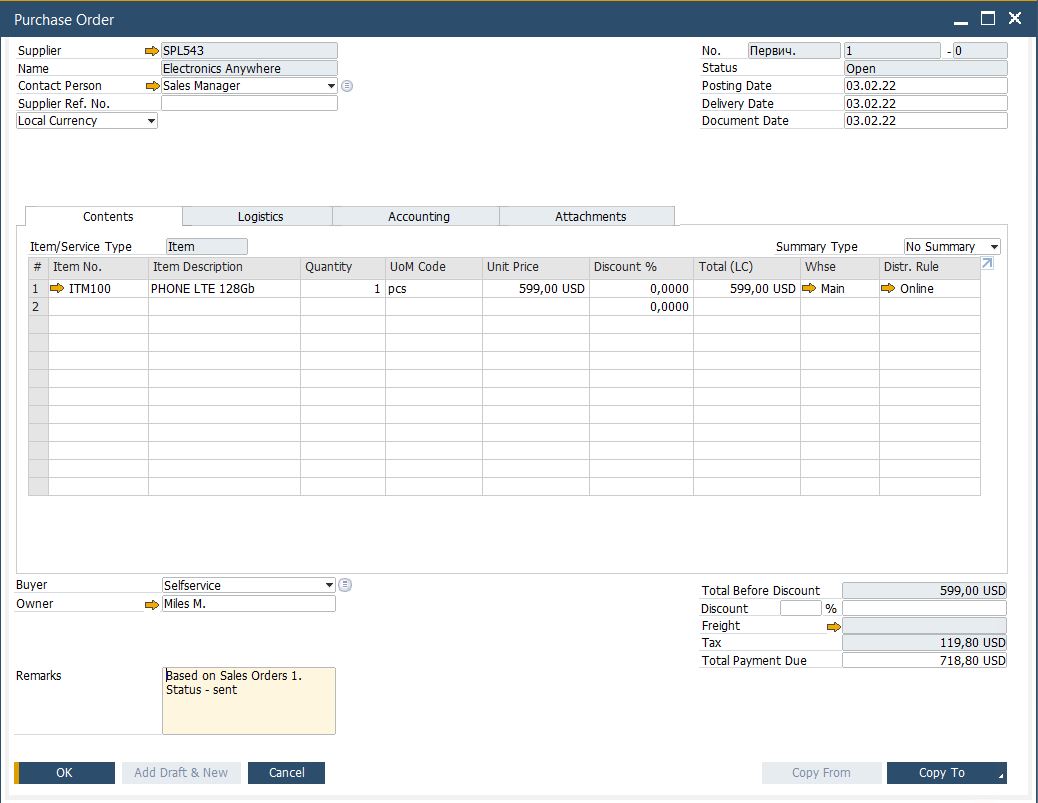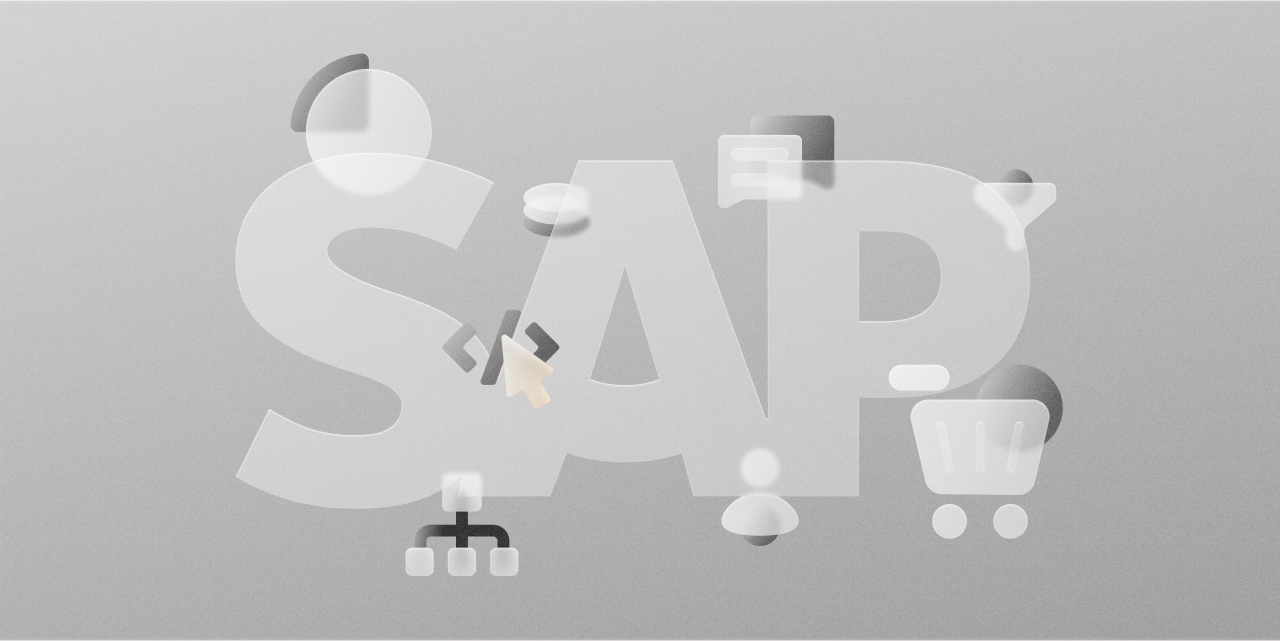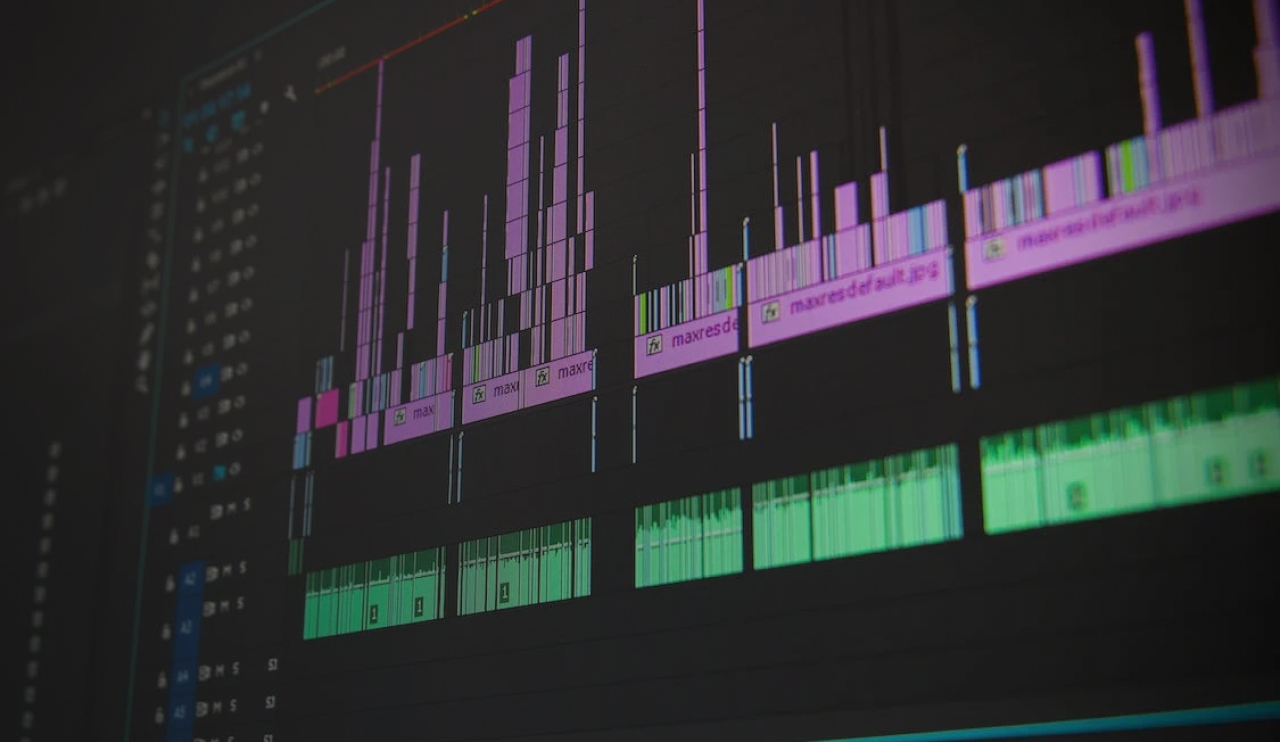SAP B1 and eCommerce system
To demonstrate how SAP Business One works together with an e-Commerce system, we will tell the story of Andrew, who is preparing for his girlfriend’s birthday. He plans to give her a new smartphone, and a phone case with a personally designed engraving.
Andrew goes to an online shop and places an order with two items: a phone and a case.
He enters all the details and clicks “Buy”. After this, the information is sent to the back-office system – SAP Business One. After placing the order, Andrew receives an SMS to the phone number used in the order informing him that the processing of his order has started. He can also track the order status in his account on the site. Once the order was placed, the status changes to “Accepted”.

Sales Order in SAP Business One
So, the new Sales Order was registered in SAP Business One. This didn’t go unnoticed. The Sales Manager’s dashboard displays a counter with the number of unprocessed orders. In addition, it is possible to set up notifications to employees about new orders. So, the employees know about new orders in less than a minute.
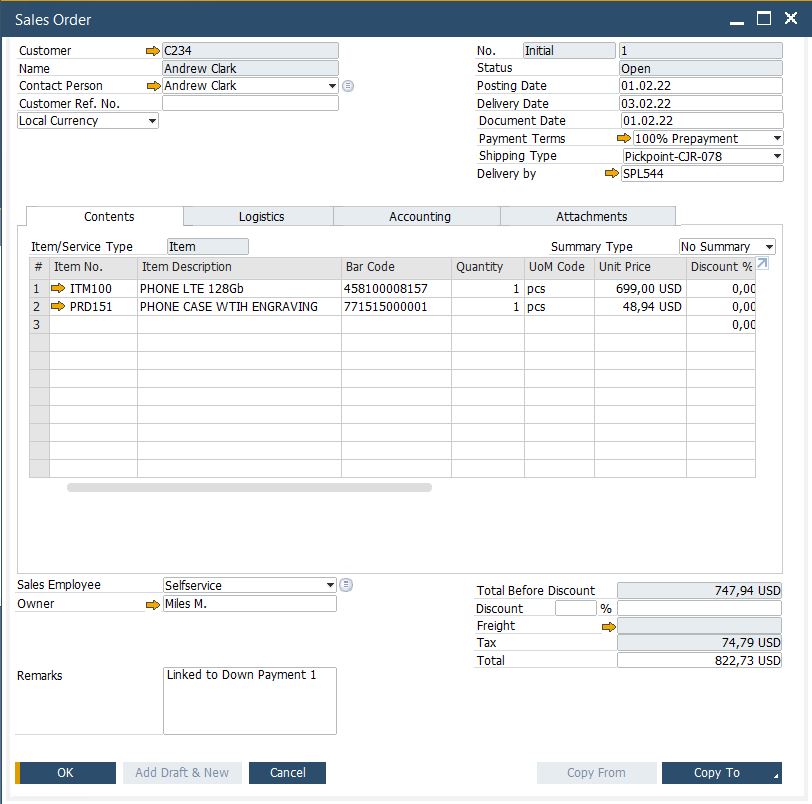
From the Company’s perspective, to fulfill Andrew’s order, two different actions need to be carried out:
- The phone is an item that is purchased from a Supplier with whom the Company has a contract. So, the phone just needs to be delivered to the Company.
- The second item, the engraved case, must go through the production cycle. An operator needs to take one of the billets from the warehouse, install it in the engraving machine, set up the program, and start the process.
Order processing
SAP Business One provides various options for processing such orders. Companies with a small turnover may prefer manual processing of each order, while large resellers can take advantage of order processing with little or no human intervention.
Manual processing
When the order is processed manually, a sales manager checks the order, confirms it, and starts the Procurement Wizard. As a result of its execution, a Purchase Order and a Production Order are generated in SAP Business One. The Purchase Order is then sent to the Supplier, and the Production Order – to the Production Manager.
Automatic processing
When the order is processed automatically, the Purchase Order and the Production Order will be automatically generated and sent to the recipients once the Sales Order is confirmed. The automation is based on the data from the Item Master Data (such as the procurement method, preferred vendor, and other product data), and the Bill of Material containing a list of materials and components required for the finished product, an engraved phone case in our example.
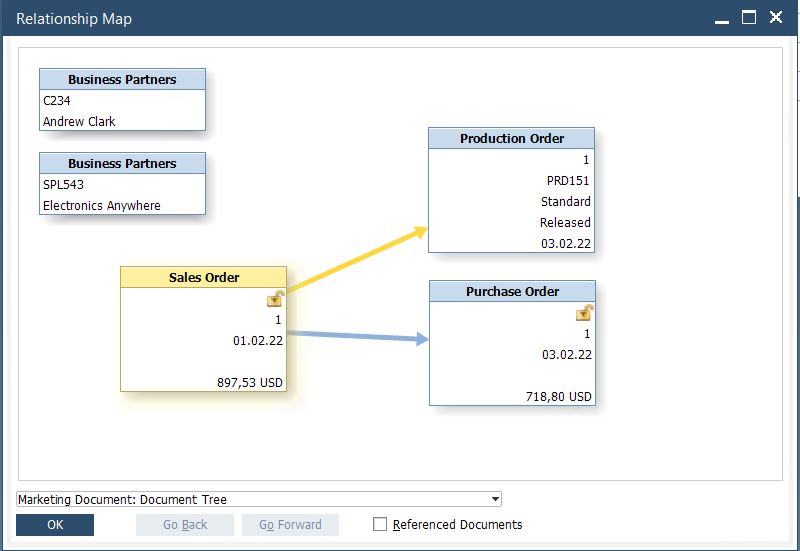
Production Manager
We will now talk about the Production Manager. His dashboard displays indicators relevant to his duties, such as resource availability, orders statuses, equipment statuses, or planned maintenance for the equipment.
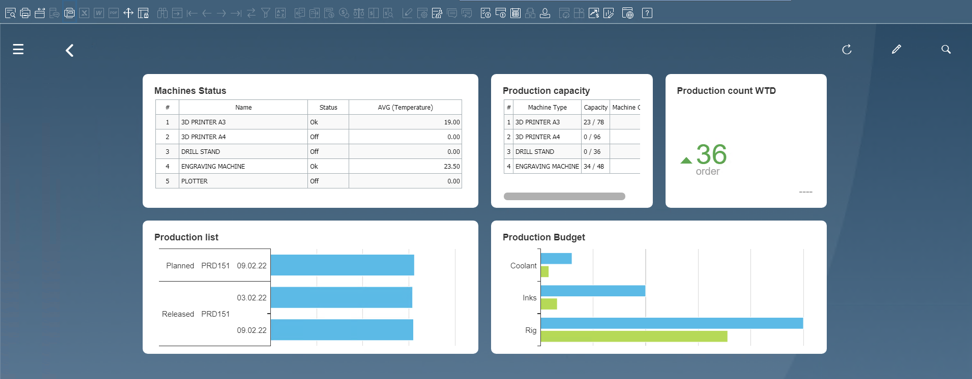
The order for the phone case engraving is displayed as a new order. The Production Manager checks the specification and plans the execution of the order based on the resources’ availability.
Andrew is lucky – his order will be completed today. Meanwhile, the status of the order displayed in Andrew’s account is changing along the process. A planned shipping date can also be displayed if required.

Integrations and accounting entries creation
The operator of the engraving machine sets the program, takes the billet from the warehouse, and starts the machine. Once the phone case is ready, the operator transfers it to the product warehouse. Along with this process, SAP Business One creates all the necessary accounting entries that include the Company’s expenditures on components and various types of work.
Meanwhile, the Supplier has already delivered the phone to the Company’s warehouse. SAP Business One is a one-time entry system, that’s why the storekeeper only needs to copy the data from the Purchase Order to the AP Invoice.
On the next step, he needs to enter the phone’s serial number into the system. With fully automated processes, these actions are not necessary. The integration helps to add invoices from the supplier to the system without any manual action. In that case, the storekeeper only needs to compare the data in the System with the data on the phone box. Once that is done, the phone will appear in the warehouse balance. All the necessary accounting entries will be created automatically.

Shipment process and integrations
Both products are at the Company’s warehouse. The Sales Manager receives a notification that he can proceed with the shipment.
Various shipment options are available; however, Andrew chose courier delivery. Therefore, the sales manager requests a pickup and creates a Pick List. Based on the Pick List, the storekeeper prepares the shipment.
Integration with the courier service allows sending the request to the nearest DHL office, and when the courier arrives at the warehouse, the package with the printed label will already be waiting for him. At this moment, the status of the order in Andrew’s account will be updated to “Out for delivery”.


Service module
In addition to the modules related to this story, SAP Business One also includes Sales Opportunities, Project Management, and Service modules.
A few words about the Service module. It can be used both for the clients’ equipment (post-sales service) and for the Company’s own equipment. For example, the engraving machine. Regular use of it causes breakages from time to time. When it happens, the Production Manager creates a request for its repair in SAP Business One.
Besides ad-hoc breakages, the equipment undergoes planned maintenance. The technician’s work hours are linked to each machine/device and can be calculated as costs for the maintenance of this unit.
If the Company has several technicians, it might want to use SAP Business One Service mobile application, which allows the staff to receive repair requests without accessing the full version of SAP Business One.
In the case of hiring an external company for services, integration with their system can be done to send notification of breakages promptly. And even more than that, the equipment itself can notice deviations in its work and notify related employees by creating requests for the Service.
If you consider using SAP Business One in your company and have some questions regarding it, feel free to get in touch and schedule a free consultation.
Contact Us